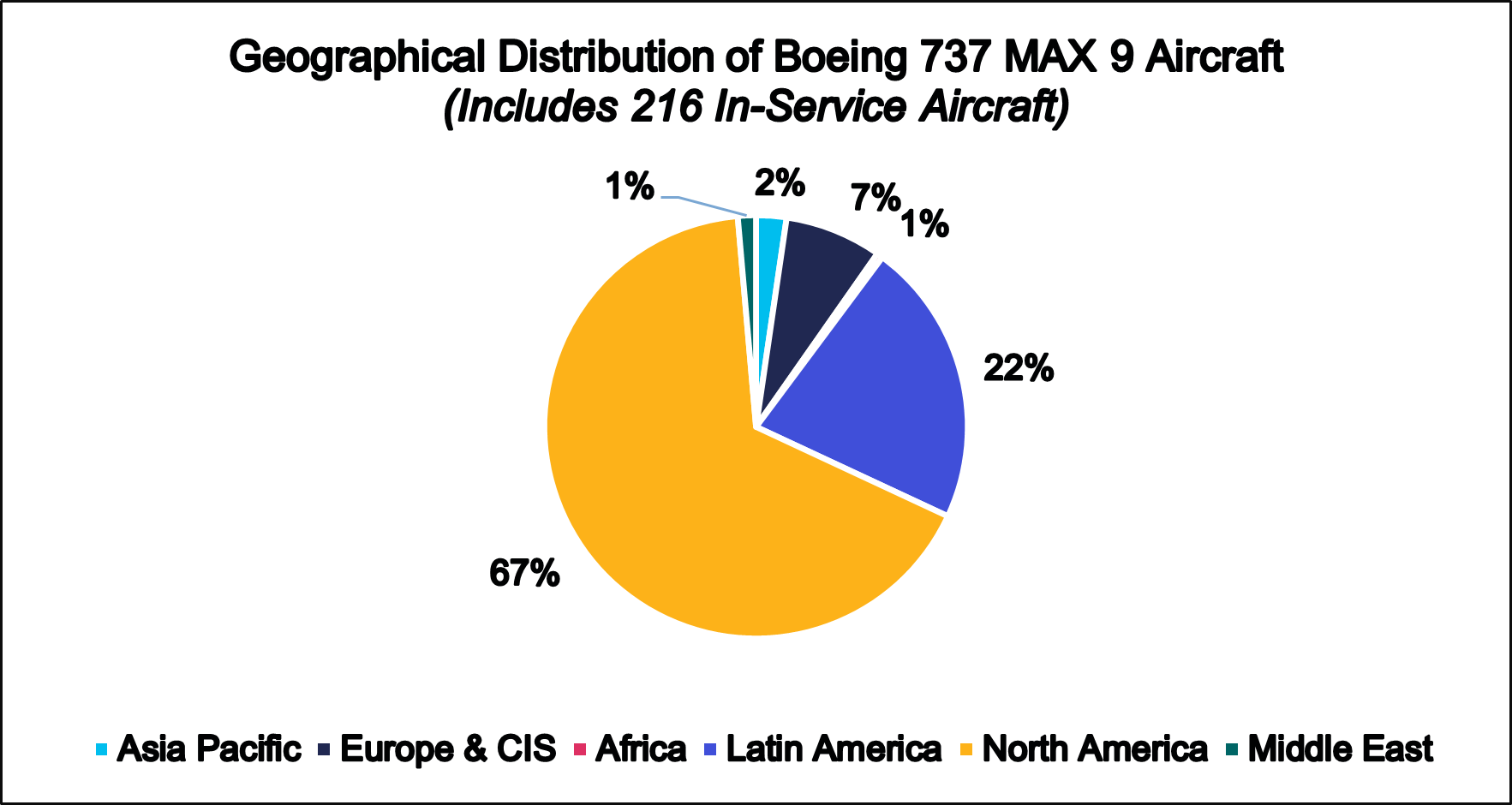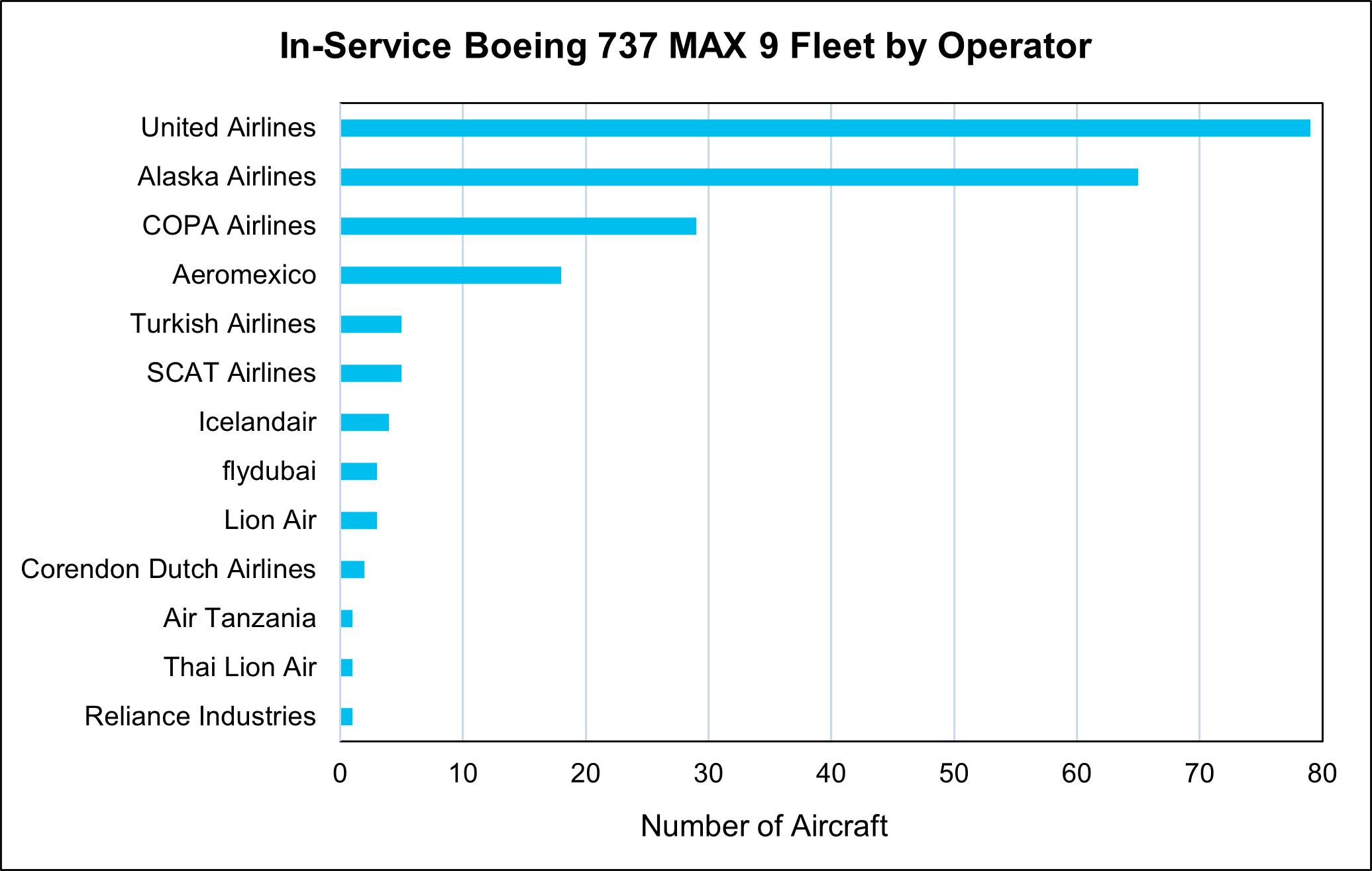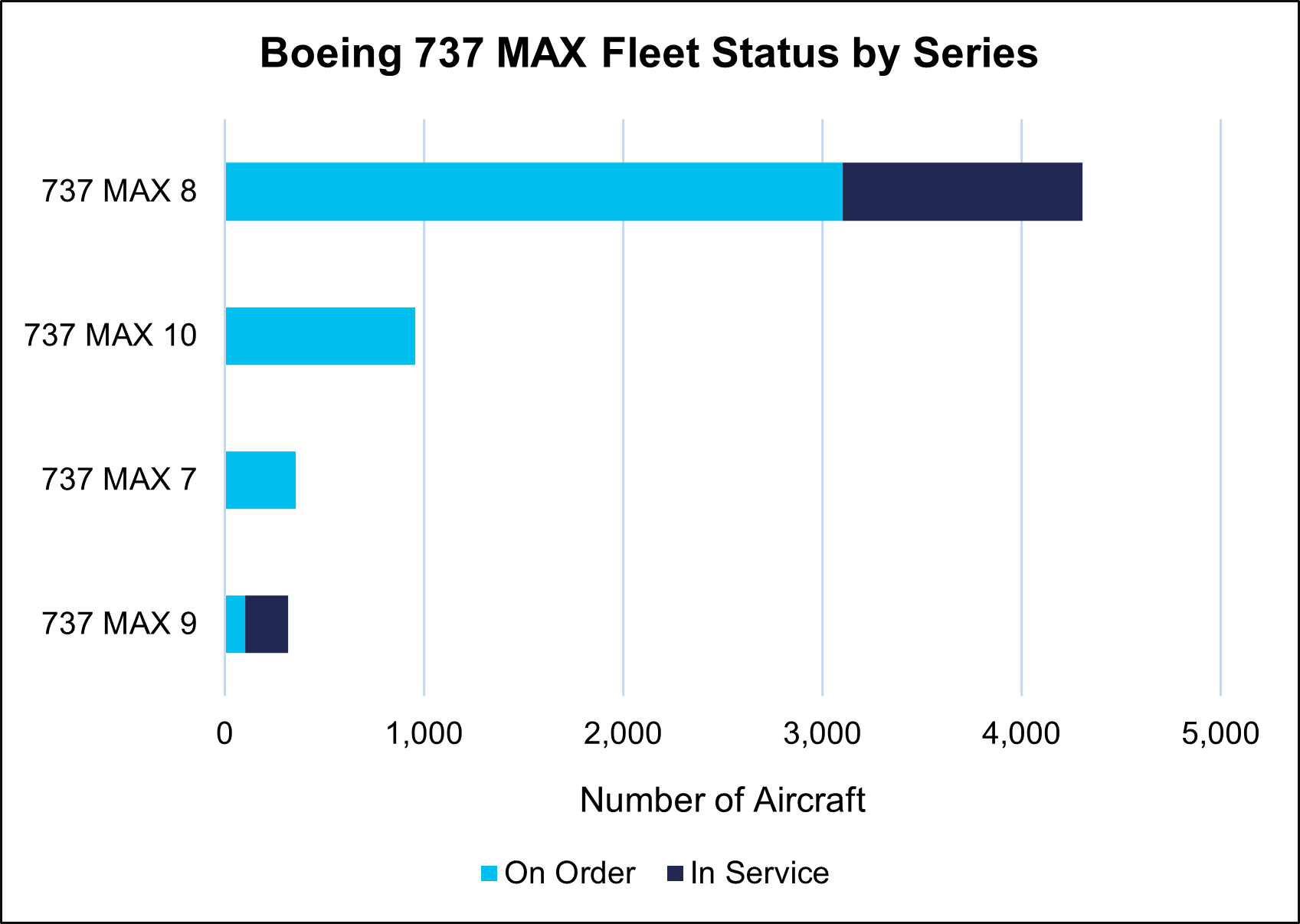08/01/2024
Mike Yeomans
Director – Valuations and Consulting, IBA
ISTAT Certified Senior Appraiser
Overview
On 5th January 2024, Alaska Airlines flight 1282 performed an emergency turnback of one of its Boeing 737 MAX 9 aircraft with registration N704AL and Manufacturer’s Serial Number 67501. The loss of the emergency exit door plug from the left-hand side of the aircraft caused a rapid decompression of the cabin and left a large hole in the side of the fuselage.
The aircraft returned safely and there were no injuries sustained onboard the aircraft, nor on the ground. The plug is installed in place of an emergency exit door, which is installed and activated in certain aircraft cabin configurations.
The unsafe condition created by the incident quickly resulted in the Federal Aviation Administration (FAA) issuing an emergency Airworthiness Directive (AD), grounding the affected aircraft. The European Aviation Safety Agency (EASA) has since adopted the US regulator’s directive.
In this short document, IBA uses data from its industry-leading IBA Insight data intelligence platform to assess the situation and analyse the impact of recent events.
What does the grounding order require, and which aircraft are affected?
The FAA’s grounding order requires that all Boeing 737 MAX 9 aircraft with the emergency exit door plug installed must be inspected before further flight. This is notwithstanding any special flight permits, which if requested would require the aircraft to be unpressurised during flight.
The order applies to aircraft in any category, so this is also expected to impact the business jet variant of the 737 MAX, the MAX 9 BBJ, although there is currently only one aircraft in service.
Using data from IBA Insight, we estimate that around 85% of the global fleet of 737 MAX 9 aircraft have the mid-exit door plug installed.
Which airlines and aircraft are affected by the grounding?
The majority of in-service Boeing 737 MAX 9 aircraft are operated in North America, specifically the US, with 144 aircraft representing two-thirds of the 216 aircraft fleet.

Source: IBA Insight
The FAA order only affects aircraft with the mid-exit door plug installed, which is common in the aircraft of full-service carriers with lower-density cabin configurations. For example, Alaska Airlines configures its 737 MAX 9 with 178 seats across three classes according to IBA Insight.
United Airlines, the largest operator of the type, uses a similar configuration with 179 seats, again across three classes. The MAX 9 represents around 5% of United’s overall fleet size across both the mainline and United Express operations.
The entire MAX 9 fleets of Alaskan and United are expected to be impacted by the order, which has already caused a swathe of flight cancellations and is expected to cause continued service disruption at these carriers whilst the required inspections are carried out.
Alaska Airlines operates a smaller fleet of 65 737 MAX 9s compared with United, however, the grounding is more impactful on its operation, with the affected model representing approximately 20% of its fleet, although some aircraft have already been cleared for return to service following inspection.
The below chart shows the current operators of Boeing 737 MAX 9 aircraft.

Source: IBA Insight
Airlines using their MAX 9 aircraft in higher density configurations, for example, Indonesia’s Lion Air, activate the mid-exit door to enable the aircraft to be operated with a higher seat count. As the door is being used and therefore not plugged, airlines using the MAX 9 in this way will not be impacted, even if their respective aviation authorities choose to adopt the FAA’s directive.
What will be the likely impact for Boeing?
Boeing currently has 104 737 MAX 9 aircraft on order backlog, the least of any Boeing 737 MAX model. In terms of capacity, the MAX 9 sits between the most popular Boeing 737 MAX 8 and the largest 737 MAX 10 variants. However, in terms of demand, the MAX 9 lags all other variants, particularly since the launch of the MAX 10.
The following chart uses data from IBA Insight to show the status of the Boeing 737 MAX programme in terms of aircraft already in-service and those that are on order.

Source: IBA Insight
Note: 737 MAX 8 includes 737 MAX 200 model
The MAX 7 and MAX 10 are not yet certified nor in production, and the MAX 8 therefore accounts for the majority of deliveries.
It is unlikely that there will be any meaningful impact to 737 MAX deliveries and IBA also does not expect the recent events to impact the backlog for the MAX 9. Customers will remain committed to the type in IBA’s opinion.
It is likely that the grounded aircraft will return to service in the coming days and weeks as the affected fleet of MAX 9s are examined and cleared for service. However, this event draws further attention and scrutiny on Boeing, as it comes after a series of issues around quality control at the aircraft manufacturer and its suppliers.
***ENDS***
About IBA
IBA delivers the best of all worlds - deep aviation consultancy expertise, and cutting-edge and actionable data insights, all delivered by a proven, expert team with a strong customer focus.
An independent, innovative and forward-thinking business, IBA has over 35 years of heritage and experience in aviation. Having won the Sustainable Technology award for its IBA NetZero platform in 2023 and for its Carbon Emissions Calculator in 2022 and being named 'Appraiser of the Year' by their clients for five years, IBA prides itself on its integrity, fierce independence, and continual innovation.
The key to IBA’s success is its people – some of the best in the industry, based in multiple locations across the globe – real experts who are passionate about aviation and go the extra mile for their clients.
IBA media contacts
Charlie Hampton / Faye Clarke
Email: [email protected] / [email protected]
Mobile: +44 (0)7884 187297